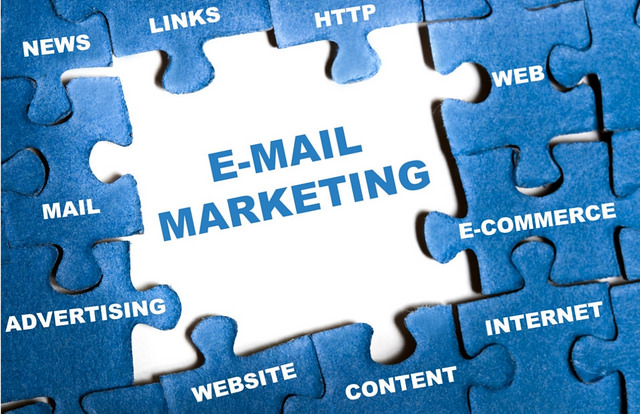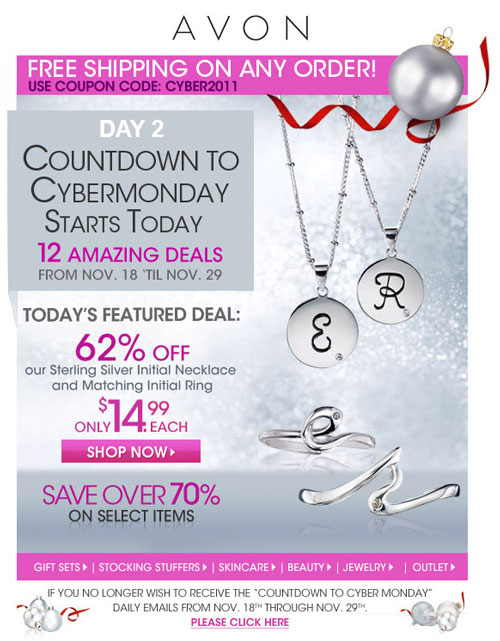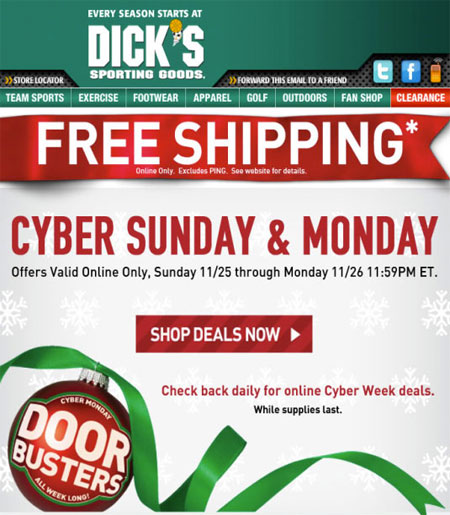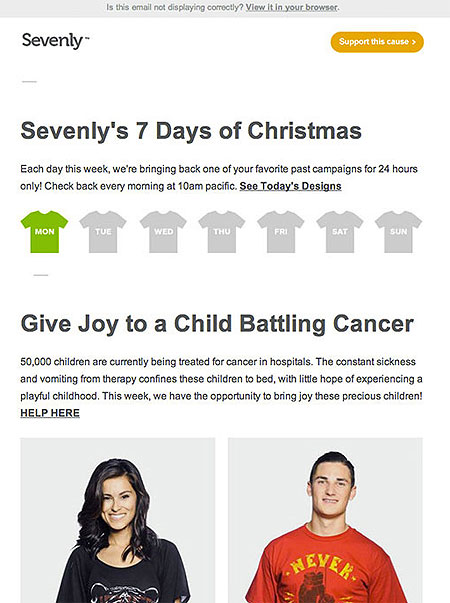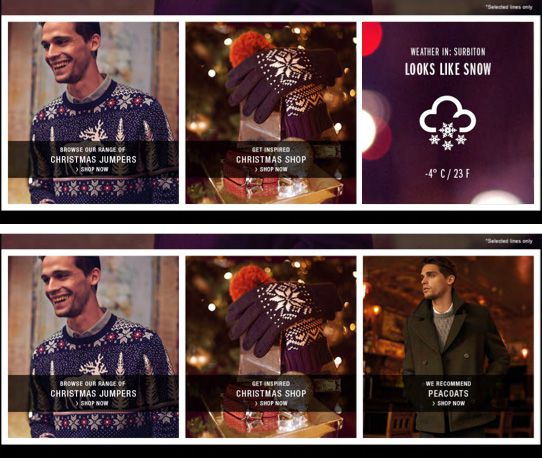Time limited coupon codes, daily promotions, loyalty program events and new product launches are staples in retail email campaigns.
But email response is strongly determined by relevance, and there’s no better way to become irrelevant than for content and offers to expire before an email is read.
Your own list behavior may vary, but you likely don’t have 100% open rate within 24-72 hours. For example, Hubspot analyzed 6.4 million emails and found only 50% were opened within the first 24 hours and 80% of emails were opened within 12 days.
When email marketing expires
Consider holiday marketing…
Avon’s deal-of-the-day creative is only relevant the day it’s deployed. Imagine if the same email updated itself dynamically to reflect the right feature at the right time?
Dick’s Sporting Goods asks subscribers to “check back daily” (click through to the website). What if Dick’s could nix the friction and pull the daily deals right into the inbox? (Remember, Web users are lazy.)
Sevenly’s is another example of daily-changing featured products. “See today’s designs” wouldn’t require a link to the site.
To encourage repeat visits throughout December, Sephora’s 26 Days of Delights unveiled a new free deluxe sample-with-purchase daily, with all samples available from the date of reveal until sold out. For example, on day 14, samples from days 2, 3, 8, and 10-14 may all still be for grabs. But to see what was still available on any given day, a customer had to enter a coupon code in checkout that triggered a pop-up. With dynamic email, a customer could check the daily deal right from a daily email, with available items populated in real-time.
Of course, it’s not just holiday marketing that can benefit from real-time creative. Consider any of the following applications:
- Countdown timers for sales, product launches, events and coupon offers
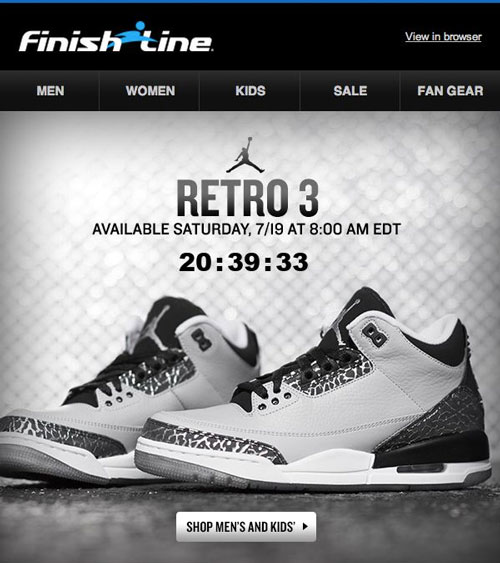
- Product availability (show offers now sold out to create urgency and prevent click-and-cry)
- Accurate and current pricing, especially when using dynamic pricing tools
- Current customer context, such as points balance, offers already redeemed, sales history and current cart contents
- Device-targeted messaging optimized for behavior/mindset behind each device, such as evening tablet use on a couch vs. morning commute on a smartphone)
- Content tailored to time of day, geolocation or local weather

- Smart, geo-targeted campaigns that update when forwarded to a friend in another state or country
- Post-purchase thank you messages that pull current shipping status and order tracking information
And imagine a campaign that optimizes itself in real time based on the engagement of other recipients (via A/B testing and analytics). Rather than analyzing the campaign post-snap and optimizing the next blast, the most clicked products become prominent for later-openers within a single campaign.
Is this even possible?
Is this far-fetched vendor-speak?
The problem within most organizations is “that sounds great, but we can’t do that.”
In most cases, anything beyond basic list segmentation, A/B testing or broad rules-based targeting simply can’t be done. And campaigns can’t be optimized while in-play – marketers must wait until the “blast is past” before analyzing results, hoping to get the next campaign just a little better.
Though some solutions exist for countdown clocks and dynamic updates for inventory (we covered Tiger Direct’s dynamic campaign nearly six years ago), these tools can’t combine with additional pieces of context that target segments or individuals.
360-degree, contextual, real-time email requires a tight integration between email campaign tools and other sources of data: CRM profile data, transaction history, site search and navigation, predictive analytics, in-store behavior gathered through apps and iBeacons, Web analytics stitching together engagement across social campaigns, affiliates and paid search touches – and don’t forget A/B and multivariate testing tools to validate personalization strategies.



